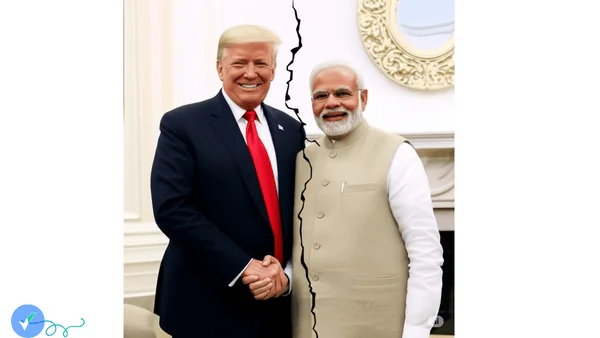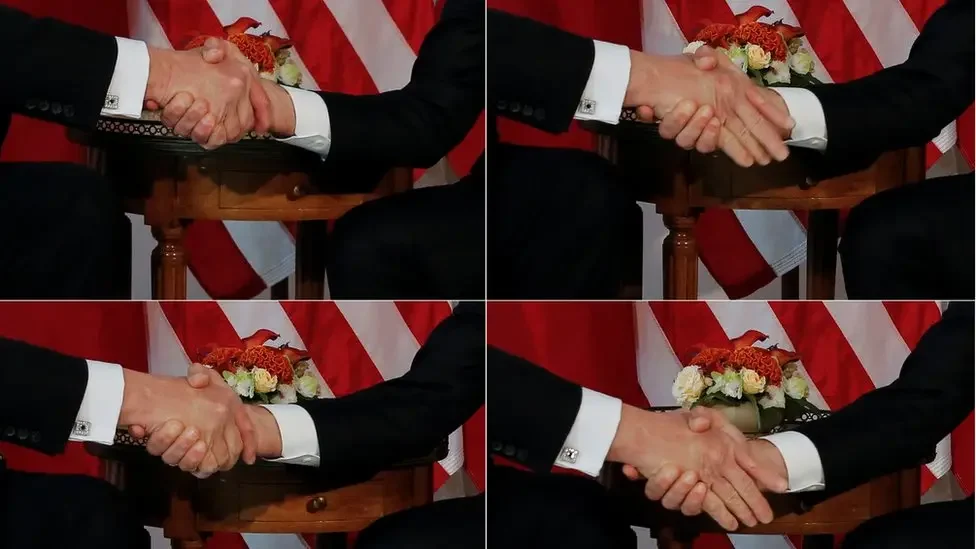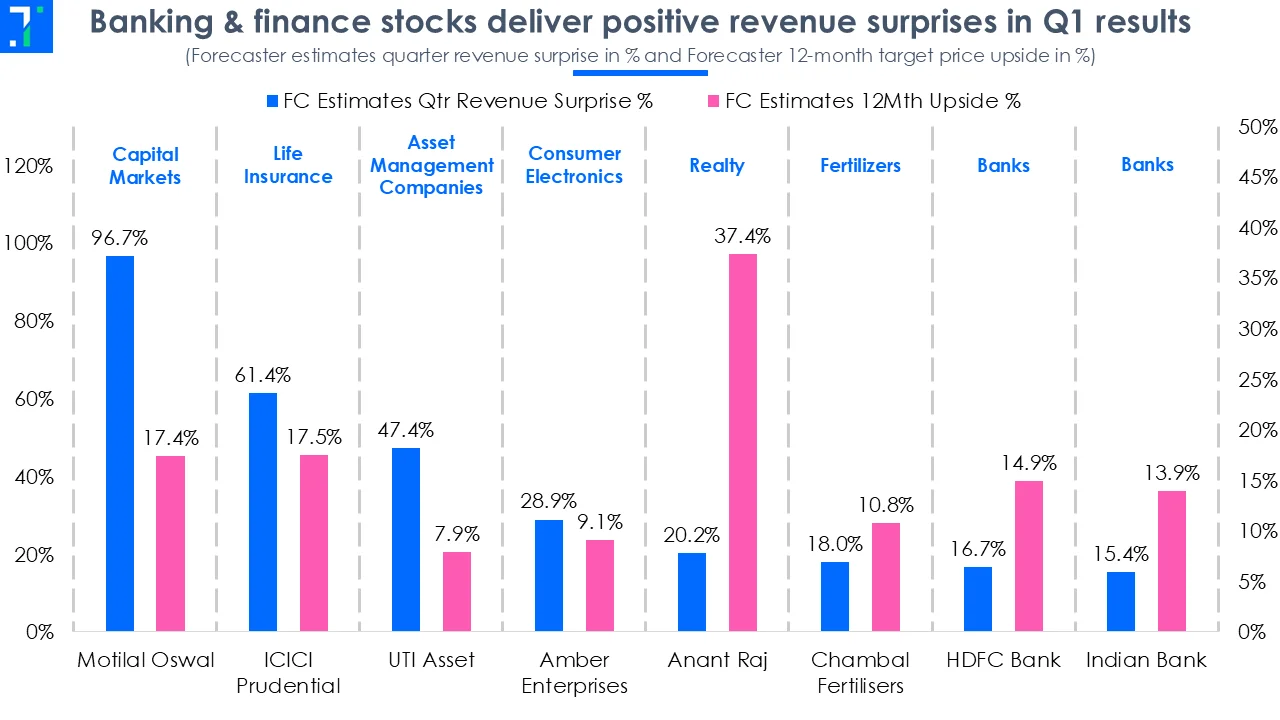
We know what a fading friendship looks like. No more funny meme forwards on whatsapp. No more brunch invites. And if things get really bad, you get blocked on Instagram.
With someone like Donald Trump, one can go from the buddy list to the block list really fast, the journey from hugs to hate messages on Truth Social short and dizzying. Trump is so notorious for this that when he and Elon Musk started hanging out, people started unofficial countdown clocks to see how long the friendship would last. It was not breaking news when it finally imploded into name calling and accusations.
With the Trump-Modi relationship the latest one to be on the rocks, we take a look at Trump's bromances, and why they unravel.
In this week's Analyticks,
- Friend to frenemy: Why Trump's friendships have short expiry dates
- Screener: Stocks beating Forecaster estimates in Q1 with high target price upsides
Let's do some armchair analysis.
Trump's bromances: a timeline
Trump's various relationships usually start promisingly. Modi and Trump kicked off their relationship with a close hug in early 2017, while French President Emmanuel Macron gave Trump such a firm handshake it left white marks on Trump's hand.

Elon Musk donated over $288 million to Trump's 2024 election campaign, and gifted Trump a red car.
But despite the absence of gifts, the Macron and Modi friendships lasted longer.

Macron's relationship with Trump has had several ups and downs - like when they argued during a press conference in 2019 about whether Europe was spending enough money on defence. Trump complained that the US was contributing too much to NATO's defence budget compared to the EU (the US accounted for 22% of the NATO budget). The contribution from the US was later lowered to 16%.
The Modi relationship in comparison, proceeded more smoothly - Trump had few complaints about India during his first term, instead calling India "a great friend and ally". The first signs of tension came in the beginning of Trump's second term, when the February 2025 press conference looked awkward and a bit uncomfortable.
Are the fights about money?
When Trump picks fights with friends, he claims it is about money. And there are big numbers at stake, according to him.

But a closer look at these numbers suggests that Trump's complaints are not based in reality. Trump's recent falling out with Macron this year was based on the claim that the US spent $350 billion on Ukraine aid, much more than Europe. But independent estimates put US aid to Ukraine at $119 billion, and EU aid at $138 billion. The EU has spent more on Ukraine than the US.
Similarly, Trump's complaint about India is that we are buying large quantities of Russian oil. He has cited that as the reason he wants to tariff Indian goods further.
But again, the facts prove a different story. Europe has purchased large amounts of LNG from Russia, and China has imported $90 billion worth of Russian oil last year, and was its biggest buyer. Trump has been silent regarding Russia related tariffs on both. The US itself imports fertilizers from Russia.
Musk failed to deliver on his promise to cut US government costs by $2 trillion. He was only able to deliver around $55 billion in savings. But that's not what caused the falling out.
Trump cares a lot about headlines
All available evidence points to Trump having two core drivers: attention, and money. But attention is something he especially craves. During the years in real estate, when Trump went bankrupt six times, he would often anonymously call the New York tabloids, and offer news about 'Donald Trump' in a fake voice and using a made-up name, hoping for headlines.
Attention thirst is the kind that cannot be easily quenched. Today's headline soon becomes yesterday's, and one is hungry for more. Consequently, many of Trump's relationships have fallen apart when he competes with a friend for media coverage.
Trump hates being contradicted, and being contradicted in front of the media is a major offence that he doesn't easily forgive - which both Macron and Modi did. At a press event in June this year, when Trump complained again that Europe was providing Ukraine with less funding than the US, Macron interrupted Trump and corrected him.
Similarly, after India and Pakistan agreed to a ceasefire after Operation Sindoor, Trump said that he had helped negotiate peace. Modi and the Indian government contradicted this claim, saying that the ceasefire was agreed upon exclusively by India and Pakistan without Trump's involvement. But Trump has repeated the claim several times.
The Musk-Trump friendship rapidly fell apart not when Musk couldn't cut government spending, but when he publicly criticized Trump's 'Big Beautiful Bill' and said that Trump would bankrupt the US economy.
With Trump, it's always personal
Trump operates less like a head of state, and more like a don. It's all about personal relationships, and if he feels thwarted, the relationship falters, regardless of the economic value at stake. So when Modi and Macron came in the way of positive attention and a great headline, he got angry. And just like he insulted Macron and Musk ("brain dead" and "crazy" respectively), he rained insults on India ("dead economy").
“The fact that India has been unwilling to publicly acknowledge the US president’s role in the India-Pakistan ceasefire, has really stuck in Trump’s head,” Milan Vaishnav of the Carnegie Endowment says.
To get Trump to back down, Modi would need to offer some sweeteners rather than hardening his stance. While the agriculture access the US is pushing for is likely off the table, Modi could offer to remove tariffs on US pharma and LNG imports. US has also been hoping for a defence deal - another sop India could offer.
Trump has the bigger economy. But as others have learned, to salvage the relationship, it is the other party that needs to be the bigger person.
Screener: Stocks beating Forecaster estimates in Q1FY26 with high analyst target price upside

Banking & finance stocks beat Forecaster estimates in Q1FY26
With the Q1FY26 results season in full swing, we look at stocks that surpassed estimates with high target price upside potential according to Forecaster. This screener shows stocks that beat Forecaster estimates in Q1FY26, with high Forecaster 12-month target price upside %.
The screener is dominated by stocks from the life insurance, capital markets, banks, consumer electronics, and IT consulting & software industries. Major stocks are Motilal Oswal Financial Services, ICICI Prudential Life Insurance, UTI Asset Management, Amber Enterprises, Anant Raj, Chambal Fertilisers & Chemicals, HDFC Bank, and Indian Bank.
Motilal Oswal’s Q1FY26 revenue and net profit beat Forecaster estimates by 96.7% and 77.1%, respectively. This capital markets company’s revenue and net profit grew by 18.4% and 31.8% YoY during the quarter. Improvements in the capital markets, asset & private wealth management, home finance, and treasury investments segments helped with revenue growth. Meanwhile, lower finance, and fees & commission expenses drove profitability. Forecaster estimates the stock price to rise 17.4% over the next 12 months.
Amber Enterprises also features in the screener after surpassing Forecaster estimates for revenue and net profit by 28.9% and 28%, respectively, in Q1FY26. This consumer electronics company’s revenue and net profit jumped by 43.6% and 43.5% YoY, respectively, during the quarter, helping beat estimates. Improvements in the consumer durables, electronics, and railway sub-system & defence businesses, driven by increased demand in the commercial AC segment and strong order execution, drove revenue growth. Revenue growth outpaced expenses growth, which helped increase profitability, and Forecaster estimates the stock price to grow 9.1% over the next year.
You can find some popular screeners here.


